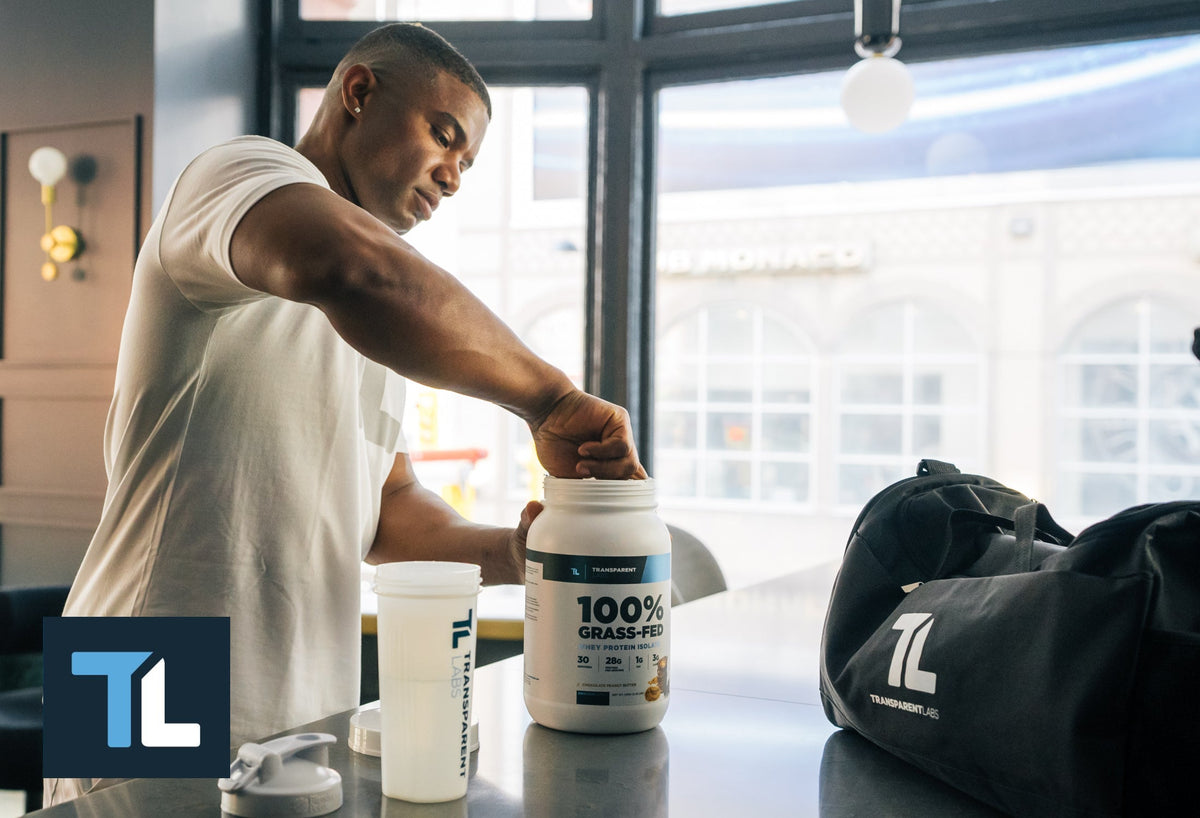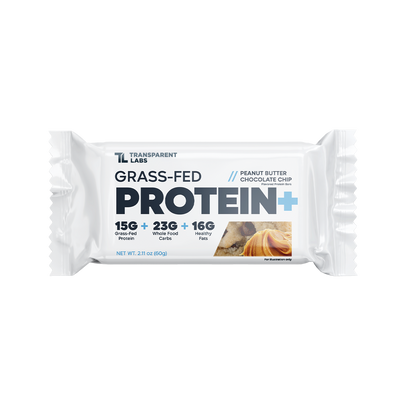5 Best Liquids to Mix with Protein Powder (Healthy Options for All)

What Are the Best Liquids to Mix with Protein Powder?
Protein powder is a versatile and efficient nutritional supplement that has become a staple for gym-goers, active individuals, and anyone aiming to boost their protein intake. For those engaged in regular exercise, especially resistance training or endurance sports, adding protein powder to the diet helps promote muscle recovery and growth [1]. Moreover, protein powders can be quite useful as a convenient—and tasty—way to increase protein intake for sedentary individuals, senior citizens, or those recovering from an injury.
Wait a minute, did we just say protein powder can be tasty? It sure can be! Gone are the days of choking down chalky, gag-reflex-inducing whey protein shakes after you hit the gym.
Of course, the taste of a protein shake depends on the protein powder flavoring, its texture, and which liquid you use to mix it. So, if you're wondering what to mix protein powder with, you've come to the right place.
What Are the Best Liquids to Mix Protein Powder?
While you can mix protein powder with just about any water-based liquid (and many non-liquid foods), there are some liquids that mesh with protein powder better than others. Fortunately, no matter which type of protein powder you're using (e.g. whey protein or plant-based protein), the same liquids will work. Here are the five best options:
Water
Water might seem like an unremarkable choice for mixing protein powder, but its benefits are obvious. It's calorie-free, simple, stable, and good for hydration. It also allows the flavor of the protein powder to stand out, especially when using varieties that are already flavored or enhanced with sweeteners.
To make protein shakes with water more "interesting" to your tastebuds, blend in some crushed ice cubes for a chilled beverage or toss in a few dashes of spices like cinnamon or nutmeg for a flavor boost. These additions can enhance the taste/texture without adding calories, making your protein shake both refreshing and nutritious.
Dairy Milk

Dairy milk has long been the standard companion to protein powder. Its creamy texture and rich flavor enhance just about any protein shake, making it a preferred choice for many gym-goers. Beyond taste, milk is a high-quality source of protein, calcium, vitamin D, and potassium. A favorite of Transparent Labs customers is mixing milk with our Cereal-Splash-flavored 100% Grass-Fed Whey Protein Isolate.
Generally, using whole milk will yield a creamier, richer protein shake, but it comes at the cost of added calories. Skim/low-fat milk is a good compromise if you're trying to restrict calorie intake but still want a thicker, tastier protein shake than you would have with plain water.
However, for those with lactose intolerance or a dairy allergy, dairy milk is not an option. Moreover, dietary preferences, such as veganism, and concerns about fat content in whole milk might steer some away from this option. (See the section below on "Plant-Based Milk" for alternatives.)
Kefir
Originating from the Northern Caucasus, kefir is made by fermenting milk with kefir grains, which are a combination of bacteria and yeast. This fermentation process yields a creamy yogurt-like beverage that's rich in probiotics, promoting a healthy gut microbiome. The tangy flavor and slightly effervescent nature of kefir brings a refreshing twist to protein shakes.
Much like milk, kefir is also a good source of vitamin D, calcium, and protein. Being slightly acidic, kefir can also aid in the absorption of minerals such as calcium and magnesium, further boosting nutritional intake.
For individuals with mild lactose intolerance, kefir might be more tolerable than regular milk as it has a relatively low lactose content.
Plant-Based Milk (e.g. Almond Milk and Oat Milk)
Plant-based milk, especially almond and oat milk, is rapidly gaining popularity as more people steer away from dairy products. However, the low protein content of plant-based milk makes it lackluster as a source of complete nutrition for vegans and those with lactose intolerance. The good news is that these plant-based alternatives are well-suited for mixing protein powders.
When selecting plant-based milk to make a protein smoothie/shake, the key is to opt for unsweetened versions since they don't contain added sugars. The unsweetened options also have a fairly mild flavor that pairs well with just about any flavor of protein powder.
Natural Fruit Juice
Natural fruit juice offers a flavorful alternative to dairy and non-dairy milk, infusing protein shakes with the sweetness and tanginess of fruit. This option is particularly appealing for those looking to add natural sugars and vitamins to their diet. Orange, pineapple, and berry juices are popular choices, each contributing a unique blend of vitamins, minerals, and antioxidants. However, the high sugar content of fruit juices, whether natural or not, is a consideration for those monitoring their calorie or sugar intake.
Also, some flavors of protein powder may not mesh well with fruit juices. (For example, vanilla protein powder mixed with grapefruit juice might be tough on the palate.) In general, it's best to match the fruit juice with the flavor of the protein powder you're using; berry-flavored protein powder goes with berry juices, and so on.
FAQ: What to Mix Protein Powder With

Q: Can you mix protein powder with solid/semi-solid foods?
A: Absolutely. Protein powder can be mixed with an array of solid and semi-solid foods for a tasty protein boost. Consider, for instance, the morning ritual of oatmeal. After your oatmeal is prepared, simply mix protein powder into it with a spoon and enjoy. Likewise, you can add protein powder to foods like yogurt and cottage cheese.
Q: Can you bake with protein powder?
A: For the most part, yes. However, some plant-based protein powders may greatly alter the texture of baked goods. Casein protein and beef protein are also subpar for baking applications (especially if you desire a recipe with a firm texture). As such, whey protein powder is the best option for most baking recipes, especially muffins, cookies, breads, and pancakes.
Adding protein powder (of any variety) also works quite well for unbaked recipes. Many people get creative and make things like protein waffles, protein brownies, protein balls (made with nut butter), and protein parfait yogurt. With a little trial and error, the sky is the limit once you add protein powder to your culinary concoctions. (Note that unflavored protein powder might be the best option for some recipes.)
Q: When is the best time to drink a protein shake?
A: Ideally, after a workout. During intense workouts, skeletal muscle fibers experience localized "trauma" described as micro-tears. Consuming protein powder, particularly whey protein powder, shortly after a workout can expedite this recovery process, thanks to its rapid digestion and absorption compared to whole-food protein sources. This timely protein supply significantly enhances muscle synthesis, reduces muscle soreness, and prepares the body for the next training session.
Mixing Protein Powder: Key Takeaways
Protein powders, available in various forms such as whey, casein, and plant-based options like pea and rice protein, offer a convenient solution for active individuals who often struggle to meet their elevated protein requirements through diet alone, particularly when the goal is to build muscle mass and improve athletic performance. A virtue of protein powder is that it can be easily incorporated into smoothies and various food recipes while enhancing (or at least not ruining) their flavor and texture.
Furthermore, protein powder can be a valuable asset for those on a weight-loss journey. Protein promotes satiety, helping to curb hunger and reduce overall calorie intake, which is crucial for weight loss or maintenance [2].
Beyond muscle repair and satiety, protein powder also plays a role in overall health and wellness. Adequate protein intake is vital for the maintenance of many biologically important structures and processes, such as immune function, connective tissue integrity, neurotransmitter production, and more [3]. Protein powder may also help prevent muscle loss associated with aging (i.e. sarcopenia)[4].
Now that you know what to mix protein powder with, toss a scoop of Transparent Labs Protein Powder in your liquid/food of choice and get to it—there are gains to be made!









